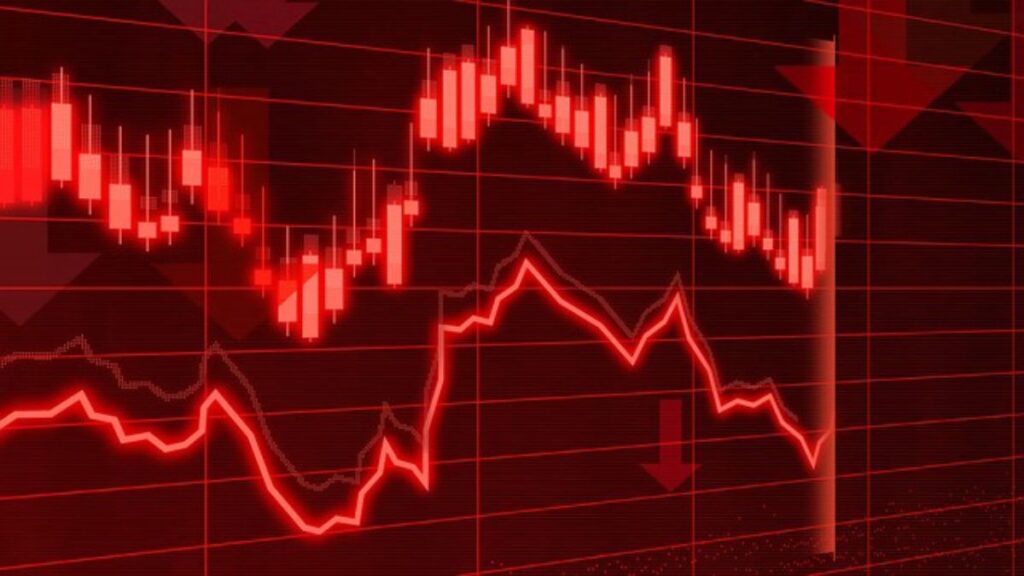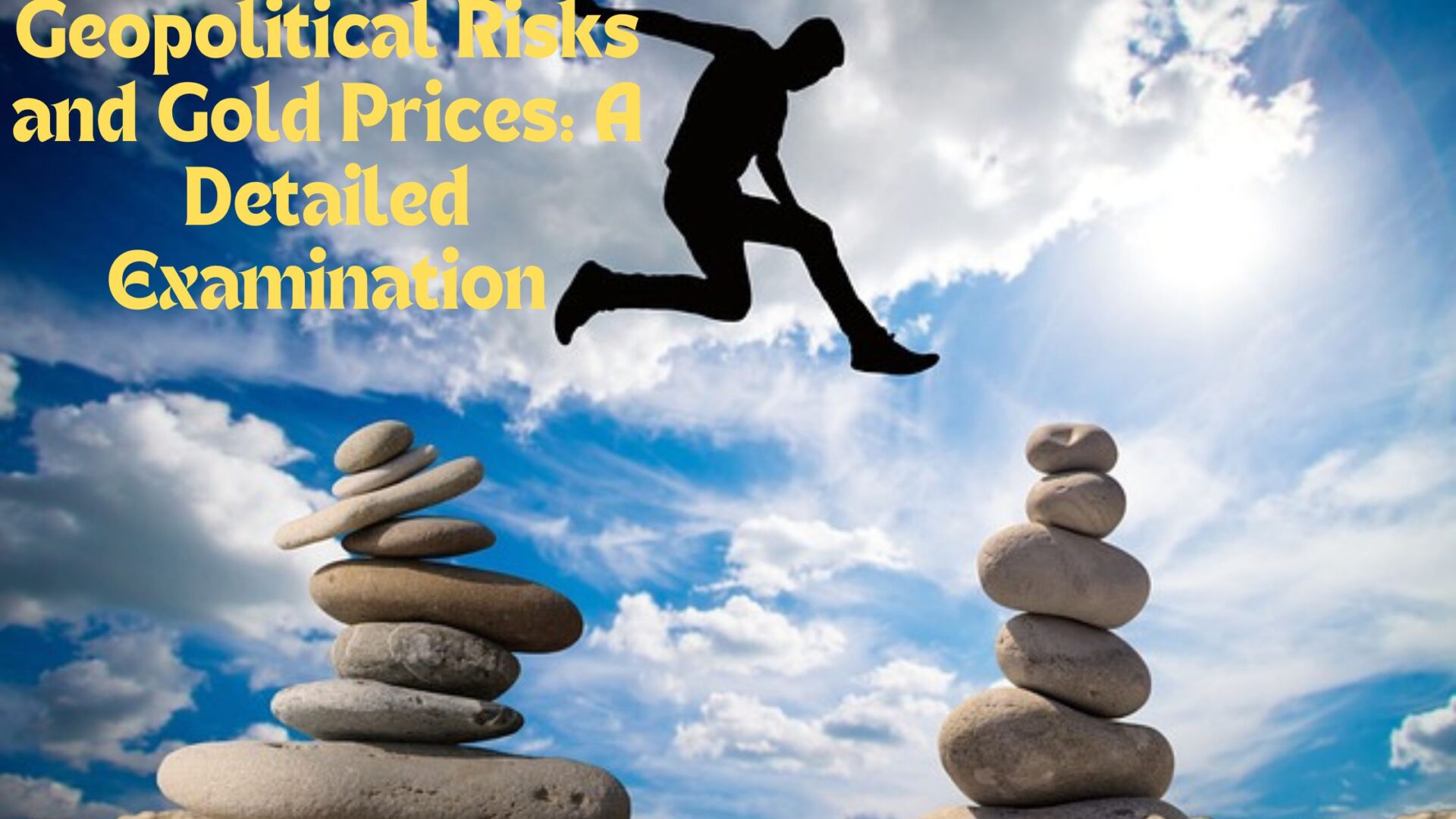Introduction:-
Geopolitical Risks and Gold Prices: A Detailed Examination

Gold has long been considered a safe-haven asset, attracting investors during times of economic and political uncertainty. Geopolitical risks, which include wars, political instability, and global tensions, can significantly influence gold prices. In this article, we will explore the intricate relationship between geopolitical risks and gold prices, providing a comprehensive understanding of how and why gold responds to global events.
The Safe-Haven Appeal of Gold
Gold’s allure as a safe-haven asset stems from its historical role as a store of value. Unlike fiat currencies, which can be devalued by inflation and other economic factors, gold tends to maintain its value over time. This characteristic makes gold an attractive investment during periods of geopolitical turmoil, as investors seek to protect their wealth from potential market volatility.
How Geopolitical Risks Affect Gold Prices

- Market Uncertainty and Volatility
- Flight to Safety: During geopolitical crises, such as wars or political instability, financial markets often experience heightened volatility. Investors tend to move their capital from riskier assets, like stocks, to safer assets like gold. This increased demand drives up gold prices.
- Global Market Impact: Geopolitical events can disrupt global markets, causing uncertainty about future economic conditions. For example, tensions between major economies can lead to fears of trade disruptions, prompting investors to seek refuge in gold.
- Inflationary Pressures
- Currency Devaluation: Geopolitical risks can lead to the devaluation of national currencies, particularly in countries directly involved in conflicts. When a currency loses value, the price of gold in that currency increases, as gold is typically priced in U.S. dollars. This relationship reinforces gold’s role as an inflation hedge.
- Commodity Prices: Geopolitical tensions can also impact the prices of other commodities, such as oil. Higher oil prices can lead to broader inflationary pressures, which in turn boost gold prices as investors look for protection against rising prices.
- Central Bank Policies
- Monetary Easing: In response to geopolitical crises, central banks may implement monetary easing policies, such as lowering interest rates or engaging in quantitative easing. These measures can lead to lower yields on government bonds, making gold more attractive by comparison.
- Gold Reserves: Central banks themselves may increase their gold reserves during times of geopolitical uncertainty, further driving up demand and prices.
Historical Examples of Geopolitical Influence on Gold Prices
- The 2008 Financial Crisis
- The global financial crisis of 2008, triggered by the collapse of major financial institutions, saw gold prices surge as investors sought safety. Gold prices rose from around $800 per ounce in 2008 to over $1,800 per ounce by 2011.
- The Ukraine Crisis (2014)
- The annexation of Crimea by Russia in 2014 and the subsequent conflict in Eastern Ukraine led to increased geopolitical tensions in Europe. Gold prices saw a significant increase during this period, as investors reacted to the uncertainty and potential for broader conflict.
- U.S.-China Trade War (2018-2019)
- The trade tensions between the United States and China caused considerable market uncertainty. During this period, gold prices rose as investors feared the economic impact of escalating tariffs and potential retaliatory measures.
Predicting Gold Prices During Geopolitical Events
While historical trends provide valuable insights, predicting gold prices during geopolitical events remains challenging due to the complex interplay of factors involved. Investors should consider the following:
- Event Severity: The potential impact of a geopolitical event on global stability and economic conditions.
- Duration and Resolution: The expected length of the crisis and the likelihood of a swift resolution.
- Market Sentiment: Investor perception and behavior, which can be influenced by media coverage and geopolitical analysis.
How do central bank policies affect gold prices amid geopolitical risks?
Central bank policies play a significant role in influencing gold prices amid geopolitical risks. The actions and decisions of central banks can impact the broader economy, financial markets, and investor sentiment, thereby affecting the demand for gold. Here’s how central bank policies can influence gold prices during times of geopolitical uncertainty:

1. Monetary Policy and Interest Rates
- Interest Rate Decisions: Central banks use interest rates as a tool to manage economic stability and inflation. During geopolitical crises, central banks may lower interest rates to stimulate economic activity and provide liquidity to financial markets. Lower interest rates reduce the opportunity cost of holding non-yielding assets like gold, making gold relatively more attractive to investors seeking safe-haven assets.
- Quantitative Easing (QE): In extreme cases, central banks may implement QE programs to inject liquidity into the financial system and lower long-term interest rates. These measures can weaken currencies and increase inflation expectations, enhancing gold’s appeal as a hedge against currency devaluation and inflationary pressures.
2. Currency Devaluation and Exchange Rates
- Currency Impact: Geopolitical tensions can lead to currency depreciation as investors flee to safer currencies or assets. Central banks may intervene in currency markets to stabilize exchange rates, but prolonged uncertainty can undermine confidence in local currencies. Gold, priced in U.S. dollars globally, becomes more expensive in local currencies experiencing devaluation, boosting demand from investors seeking wealth preservation.
3. Reserve Management and Diversification
- Gold Reserves: Central banks hold significant gold reserves as part of their foreign exchange reserves. During geopolitical risks, central banks may increase their gold holdings to diversify away from volatile currencies and geopolitical uncertainties. Increased demand from central banks can support higher gold prices in global markets.
4. Market Sentiment and Confidence
- Investor Confidence: Central bank policies signal the economic outlook and financial stability. Accommodative policies that suggest economic weakness or uncertainty can heighten investor risk aversion, leading to increased demand for safe-haven assets like gold. Conversely, hawkish policies indicating strong economic growth and stability may reduce gold’s appeal as a safe-haven asset.
5. Global Economic Conditions
- Global Impact: Central bank policies in major economies, such as the Federal Reserve (Fed) in the U.S., the European Central Bank (ECB), and the Bank of Japan (BoJ), can have ripple effects on global financial markets and commodity prices, including gold. Changes in monetary policy stance or economic forecasts can influence investor expectations and gold price movements globally.
Central bank policies directly impact gold prices amid geopolitical risks by influencing interest rates, currency values, investor sentiment, and global economic conditions. Investors closely monitor central bank decisions and economic indicators to assess the potential impact on gold prices and adjust their investment strategies accordingly. Understanding these dynamics helps investors navigate the complexities of global financial markets and make informed decisions during periods of geopolitical uncertainty.
Conclusion
Geopolitical risks have a profound impact on gold prices, driven by the metal’s safe-haven status and its ability to hedge against inflation and currency devaluation. Understanding the relationship between global events and gold can help investors make informed decisions during times of uncertainty. While predicting precise price movements is challenging, recognizing the patterns and factors at play can provide valuable guidance for navigating the gold market during geopolitical crises.
Whether you’re a seasoned investor or new to the world of gold, staying informed about geopolitical developments and their potential impact on gold prices is crucial for making strategic investment decisions.
References
- World Gold Council:
- “Gold: The ultimate safe haven asset?” – This article discusses gold’s role as a safe-haven asset and its performance during times of economic and political uncertainty.
- World Gold Council
- Investopedia:
- “How Gold Affects Currencies” – This piece explains the relationship between gold prices and currency values, highlighting how geopolitical risks can influence this dynamic.
- Investopedia
- The Balance:
- “Why Investors Buy Gold During Times of Crisis” – This article provides insights into why gold is a popular investment during geopolitical and economic crises.
- The Balance
- Reuters:
- “Gold hits 7-year high as virus fears, geopolitical tensions rise” – This news article discusses the impact of recent geopolitical events on gold prices, providing real-world examples.
- Reuters
- Journal of International Money and Finance:
- “The impact of geopolitical risks on gold prices” – A scholarly article analyzing the statistical relationship between geopolitical risks and gold prices.
- ScienceDirect
- Forbes:
- “Gold Prices Surge Amid Geopolitical Tensions” – This article explores how specific geopolitical events have influenced gold prices, with a focus on recent history.
- Forbes
- Bloomberg:
- “Why Gold Prices Are Soaring” – An analysis of various factors driving gold prices, including geopolitical tensions and market sentiment.
- Bloomberg
These references provide a mix of historical data, current events, and analytical perspectives that can help readers understand the relationship between geopolitical risks and gold prices.








